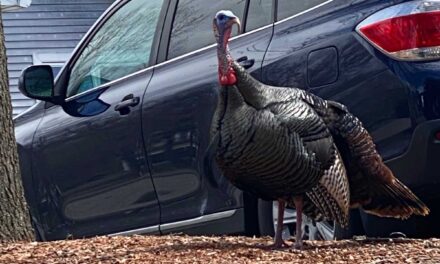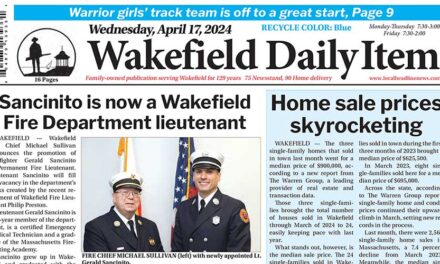Published in the December 29, 2016 edition
By GAIL LOWE
In the “olden days,” it was common practice for families to take in their elderly and care for them. Nursing home placement was rare, and assisted living facilities didn’t exist.
My family was no exception. Around Christmas time every year until I was well in my teens, my paternal grandmother came to stay with us from mid-December until the the arrival of spring. Then, she’d move on to one of her other six sons and daughters and spend time with each of them.
In some respects, her long-term visit was a bit of a hardship since it meant giving up my bed and moving into the living room where there was a pull-out sofa. But in ways that really mattered, her visits were much more valuable than anything I’d ever find lying under the tree on Christmas morning.
This grandmother of mine was a woman ahead of her time. Somehow, she put together a well-rounded educational plan for herself that included advanced mathematics, music lessons and homemaking classes. She learned to bake her own bread and churn butter. She also knit hats and mittens for her six grandchildren. She taught us how to understand algebra. She played the organ at her church.
I was 10 years old when the two boxes of men’s suit swatches found their way to our dining room table. Someone had given them to our neighbor, and since he had no use for them the neighbor gave them to my mother. All the swatches were 100 percent worsted wool, and the colors were navy blue, tan, light and dark gray and black. There also were a few swatches of red, too, though it was hard to imagine any man wearing a bright red suit unless he happened to be a clown.
My mother eyed the boxes and said, “It seems a shame to just let them sit there. What should we do with them?”
And my grandmother responded, “I’ll come up with an idea. Let me sleep on it.” Her words turned out to be prophetic.
The following morning she got out flour, sugar, vanilla, eggs, baking soda, milk, yeast and vinegar and laid everything out on the kitchen table. Then came the lard. She was in the mood to make homemade doughnuts, and we were all in for a treat.
While she sifted the flour, cracked the eggs and portioned out the other ingredients, she hummed.
And then I heard my mother say, “Well, what about those swatches? Any ideas come to you yet?”
“Yes, and I’ll tell you what I think we should do as soon as I finish my work here.”
I watched as she fried the doughnuts in a big pot of oil and placed them on brown paper bags, the kind my mother got from the A&P. I hung around the kitchen that morning because I knew I’d be getting a doughnut or two — rolled in sugar — and I wanted to find out what would become of those swatches.
As soon as the final doughnut was out of the pot and lying on the paper bag, my grandmother made her announcement.
“We’re going to make a quilt. For a winter project. That’s what we’ll do.”
“A quilt?” my mother said. “I’ve never made a quilt in my life. I wouldn’t know where to begin.”
“It’s not hard. I’ll show you.”
That very afternoon my mother and grandmother cleared off the dining room table and got started. Each swatch measured the same, so cutting wasn’t necessary. What was necessary was laying them out in a pattern that was as attractive as possible. For some reason, a few of the red ones ended up next to each other.
For the next two months after the supper dishes were washed, dried and put away, my mother and grandmother would go to the dining room to work on the quilt while my father watched the news and I did my homework.
They talked quietly while they worked, and my grandmother did most of the talking. She told my mother (who had lost her own mother when she was two years old) about the hardships of her childhood, the difficulty of raising six children while my grandfather was out at sea making his living as a cook on a fishing boat, the sorrow of having to be both mother and father because my grandfather was gone six weeks at a time, how at Christmas time he would come home from Jamaica with molasses for her homemade beans, oranges for the children and a bit of rum for himself.
While they quilted and sewed by hand, my grandmother shared household hints and imparted bits of wisdom concerning how to get along with other people.
“The fewer words you speak the less likely you are to put your foot in your mouth,” she said, giving a little smile.
While they quilted, they became close, and my mother later told me my grandmother took the place of the mother she had lost at such a young age. She came to love my grandmother and considered her a close friend. You might say that making the quilt bound them together in ways they could not have imagined.
That year, Christmas came and went, and daily I checked on the progress of that quilt. What had started as nothing bigger than a doll’s blanket was now turning into a quilt that would fit a twin-size bed. At the end of the winter when it was time for my grandmother to leave for my uncle’s home in Nova Scotia, the quilt was finished and was big enough for a double bed.
We all agreed that it wasn’t the prettiest quilt in the world, but it had the heft of one of those lead blankets dentists us to protect patients from radiation while x-rays are being taken.
My mother packed the quilt away in mothballs when spring arrived, but out it came the next fall when the weather started to turn cold. And during the first winter blast, we all made good use of that quilt, including my grandmother, who was back for her annual visit.
As the years passed, I grew up, married and started my own family. Then one Christmas my grandmother didn’t come to visit. She was gravely ill and wasn’t expected to live much longer. She died in February 1968 in the middle of a snowstorm.
One by one, family members followed my grandmother to their graves, but the quilt lived on, and now it belongs to me because no one else wanted it.
When my daughter was growing up, she and I would cuddle under the quilt while watching a favorite TV show.
Then, two weeks ago I went to a Wakefield Arts and Crafts Society meeting, and I brought the quilt with me. One member suggested that I take it to the New England Quilt Museum in Lowell to see if they wanted to display it. Who knows? They might want to add it to their collection.
When I meet with the people in charge, I’ll tell the story of the quilt and how it came to be.
If the quilt ends up in Lowell, it’ll give me a good excuse to visit this interesting mill city.
If not, then I’ve decided it shouldn’t be hidden in the attic. The quilt has a story to tell, a story equaled only by the love that developed between my mother and grandmother. You might say it’s a story about the ties that bind.




